The Diagnostic Session Control module establishes a secure gateway for accessing and modifying electronic control unit (ECU) parameters within your Mercedes-Benz, and at MERCEDES-DIAGNOSTIC-TOOL.EDU.VN, we provide the resources to help you navigate this critical function. This module is essential for tasks ranging from routine diagnostics to advanced reprogramming, acting as a gatekeeper to prevent unauthorized access and potential damage. Unlock your Mercedes’ full potential with our diagnostic tools, services, and expert guidance on ECU programming, security access, and communication protocols.
Contents
- 1. Understanding UDS Functional Units
- 2. Exploring Diagnostics and Communication Management
- 3. Diagnostic Session Control: The Key to ECU Access
- 3.1. Why is Diagnostic Session Control Important?
- 3.2. Real-World Examples of Diagnostic Session Control
- 3.3. Security Benefits of Diagnostic Session Control
- 3.4. Ensuring Accessibility of Diagnostic Services
- 3.5. Session Timeouts and Default Session Return
- 3.6. Diagnostic Session Control Sub-functions
- 3.7. Understanding Request and Response Frame Formats
- 3.7.1. Request Frame Format
- 3.7.2. Response Frame Format
- 3.8. Switching Between Non-Default Sessions
- 4. ECU Reset: Restarting the Vehicle’s Computer
- 4.1. Importance of ECU Reset
- 4.2. ECU Reset Sub-functions
- 4.3. Returning to Default Session After Reset
- 5. Security Access: Protecting Sensitive Functions
- 5.1. Importance of Security Access
- 5.2. Security Access Based on Seed and Key
- 5.3. Examples of Restricted SIDs
- 6. Communication Control: Managing ECU Communication
- 6.1. Importance of Communication Control
- 6.2. Communication Types
- 6.3. Communication Control Sub-functions
- 7. Authentication: Modern Security Methods
- 8. Tester Present: Maintaining Active Sessions
- 8.1. Importance of Tester Present
- 8.2. S3 Timer and Session Timeout
- 8.3. Why is the S3 Timer Necessary?
- 8.4. Suppress Positive Response Message Indication Bit (SPRMIB)
- 8.5. Services Supporting SPRMIB
- 8.6. Tester Present Sub-Functions
- 9. Access Timing Parameter: Managing Communication Timing
- 9.1. Importance of Access Timing Parameter
- 9.2. Access Timing Parameter Sub-functions
- 10. Control DTC Settings: Managing Diagnostic Trouble Codes
- 10.1. Importance of Control DTC Settings
- 10.2. Control DTC Settings Sub-functions
- 11. Response On Event: Automated Diagnostic Responses
- 11.1. Importance of Response On Event
- 11.2. Response On Event Sub-functions
- 12. Link Control: Adjusting Communication Parameters
- 12.1. Importance of Link Control
- 12.2. Link Control Sub-functions
- 13. Frequently Asked Questions (FAQ)
- 13.1. What is the Diagnostic Session Control module and why is it important?
- 13.2. What are the different diagnostic session modes available?
- 13.3. How does the Security Access service protect sensitive functions?
- 13.4. What is the purpose of the Tester Present service?
- 13.5. What is the S3 timer and how does it affect diagnostic sessions?
- 13.6. Can I switch directly between non-default diagnostic sessions?
- 13.7. What is the role of the Communication Control service?
- 13.8. How does the ECU Reset service help in troubleshooting?
- 13.9. What is the purpose of the Control DTC Settings service?
- 13.10. How can the Link Control service improve diagnostic speed?
- 14. Connect With Us
1. Understanding UDS Functional Units
The Unified Diagnostic Services (UDS) protocol organizes diagnostic service identifiers into functional units. These units streamline communication and control within the vehicle’s electronic systems. This structured approach enables targeted access and manipulation of specific ECU functions. The diagnostics and communication management unit is a key component of this system.
2. Exploring Diagnostics and Communication Management
The Diagnostics and Communication Management functional unit oversees diagnostic and communication-related operations within the ECU. This unit is critical for tasks such as initiating diagnostic sessions, resetting the ECU, managing security access, controlling communication channels, and ensuring the ECU remains responsive during diagnostic procedures. Effective management of this unit ensures the integrity and security of the vehicle’s electronic systems.
3. Diagnostic Session Control: The Key to ECU Access
Diagnostic Session Control, identified by service ID 0x10 (response SID 0x50), serves as a vital gateway to access and interact with an ECU. This service manages the diagnostic session of the ECU, enabling changes between different session modes to unlock specific diagnostic functions and features. Think of it as the key that unlocks different levels of access to your Mercedes’ internal systems.
3.1. Why is Diagnostic Session Control Important?
Not all UDS services can access the ECU freely. Some require the ECU to be in the default session, while others necessitate a different session. Diagnostic Session Control acts as the gatekeeper, determining which services can access the ECU based on the current session. This is a critical security feature to prevent unauthorized or accidental modification of critical system parameters. Vehicle manufacturers determine the specific access permissions for each session.
3.2. Real-World Examples of Diagnostic Session Control
In the default session, certain actions, such as software upgrades, might be restricted because this session lacks the necessary permissions. A programming session, accessible only to authorized personnel, is required for reprogramming the ECU. This structured approach protects the ECU from unauthorized access and potential damage caused by incorrect software flashing.
3.3. Security Benefits of Diagnostic Session Control
The primary purpose of Diagnostic Session Control is to safeguard the ECU, preventing unauthorized access and potential harm. By controlling access to sensitive functions, it ensures that only authorized personnel can perform critical operations. This protects the vehicle’s systems from malicious attacks or accidental misconfigurations.
3.4. Ensuring Accessibility of Diagnostic Services
Before initiating any diagnostic request, it’s crucial to verify that the service is accessible in the ECU’s current session. If not, a request to change the session is necessary before proceeding with the desired operation. At MERCEDES-DIAGNOSTIC-TOOL.EDU.VN, we provide the tools and information to navigate these session changes efficiently.
3.5. Session Timeouts and Default Session Return
If the ECU remains in a non-default session or experiences diagnostic inactivity for a specified period (typically 5 seconds), it automatically reverts to the default session. This safety feature prevents the ECU from remaining in a vulnerable state for an extended period.
3.6. Diagnostic Session Control Sub-functions
Diagnostic Session Control offers several sub-functions, each providing a distinct level of access and functionality. Understanding these sub-functions is critical for performing specific diagnostic tasks.
| Sub-function | Description | Example |
|---|---|---|
| Default Session (0x01) | The ECU’s idle state upon power-up. Basic services like reading DTCs are available, but security access is limited. | A technician reading diagnostic trouble codes in a standard service bay. |
| Programming Session (0x02) | Enables ECU programming and data transfer. All default session services are permitted. | An end-of-line engineer flashing calibration software to the ECU. |
| Extended Session (0x03) | Unlocks additional diagnostic functions and allows security access. | An end-of-line engineer performing a dynamic vehicle test to verify security levels. |
| Safety System Diagnostic Session (0x04) | Used for testing safety-critical diagnostic functions, requiring a high level of security. | Checking the functionality of airbags and tire pressure monitors. |
| Vehicle Manufacturer Specific (0x40 to 0x5F) | OEM-defined sessions to meet specific diagnostic or programming needs. | A session defined by Mercedes-Benz for specific model year diagnostics. |
| System Supplier Specific (0x60 to 0x7E) | Supplier-defined sessions for specialized system diagnostics and configuration. | A supplier using a specific session to calibrate a sensor. |
3.7. Understanding Request and Response Frame Formats
The structure of request and response frames is essential for proper communication with the ECU. Understanding these formats ensures accurate data exchange and interpretation.
3.7.1. Request Frame Format
The request frame includes the PCI Length (Protocol Control Information), the Service ID (SID), and the Sub-function ID.
| PCI Length | SID (0x10) | Sub-function ID |
|---|
3.7.2. Response Frame Format
Responses can be positive or negative, each with a specific format.
3.7.2.1. Positive Response
A positive response includes the PCI Length, SID + 0x40, and the Sub-function ID.
| PCI Length | SID + 0x40 (0x50) | Sub-function ID |
|---|
3.7.2.2. Negative Response
A negative response includes the PCI Length, error code (0x7F), the original SID, and a Negative Response Code indicating the reason for the failure.
| PCI Length | 7F | SID (0x10) | Negative Response Code |
|—|—|—|
3.8. Switching Between Non-Default Sessions
Transitioning between non-default sessions requires a return to the default session before initiating a new non-default session. This ensures a secure and controlled transition between different diagnostic modes.
4. ECU Reset: Restarting the Vehicle’s Computer
The ECU Reset service, identified by service ID 0x11 (response SID 0x51), is used to restart one or all ECUs in the vehicle. This is necessary to recover from malfunctions, freezes, or non-responsive states. During the reset, the ECU will not accept any requests or send responses. This service is typically supported in an extended session.
4.1. Importance of ECU Reset
The ECU Reset service is critical for resolving software glitches or hardware issues that can cause the ECU to malfunction. It provides a way to restore the ECU to a functional state without requiring physical intervention.
4.2. ECU Reset Sub-functions
Various sub-functions offer different reset methods, each with specific characteristics.
| Sub-function | Description | Impact |
|---|---|---|
| Hard Reset (0x01) | Simulates disconnecting the battery, re-initializing core hardware components and memory. | May result in data loss due to sudden power removal. |
| Key Off On Reset (0x02) | Simulates turning the ignition off and on, allowing the ECU to properly store data and de-initialize hardware without data loss. | The preferred reset method, minimizing the risk of data corruption. |
| Soft Reset (0x03) | Restarts the application’s main software, similar to a watchdog timer reset. | Useful for recovering from software-related issues without affecting hardware. |
| Enable Rapid Power Shutdown (0x04) | Puts the ECU into a low-power sleep mode, ready to wake up quickly. | Reduces power consumption while maintaining quick response capabilities. |
| Disable Rapid Power Shutdown (0x05) | Disables the previously enabled rapid power shutdown. | Returns the ECU to its normal power management behavior. |
4.3. Returning to Default Session After Reset
Following a successful reset, the ECU returns to the default session, ensuring a consistent and secure state.
5. Security Access: Protecting Sensitive Functions
The Security Access service, identified by service ID 0x27 (response SID 0x67), protects UDS protocol services from unauthorized access, safeguarding sensitive diagnostic data and functions. This service grants read and write access to specific services, ensuring that only authorized testers can perform certain operations.
5.1. Importance of Security Access
Security Access is crucial for preventing unauthorized modifications to critical system parameters, protecting against malicious attacks and accidental misconfigurations.
5.2. Security Access Based on Seed and Key
Security access is typically granted based on a seed and key exchange.
- Seed Request (0x01): The tester sends a request to unlock the ECU, prompting the ECU to generate a random seed based on a cryptographic algorithm.
- Seed Transmission: The ECU sends the seed to the tester.
- Key Generation: The tester uses the received seed to generate a key.
- Key Transmission (0x02): The tester sends the generated key to the ECU.
- Verification: The ECU compares the received key with its expected key. If they match, access is granted; otherwise, a negative response is sent.
5.3. Examples of Restricted SIDs
Services such as software uploading/downloading, routine control, and VIN (Vehicle Identification Number) access are typically restricted and require security access.
6. Communication Control: Managing ECU Communication
The Communication Control service, identified by service ID 0x28 (response SID 0x68), manages the ECU’s communication channels, enabling or disabling the transmission and reception of messages via a diagnostics line.
6.1. Importance of Communication Control
This service is useful for managing communication during tasks such as software downloads, where maximizing bandwidth is critical.
6.2. Communication Types
Three primary communication types are available:
- Normal Communication Messages (0x01)
- Network Management Communication Messages (0x02)
- Both Normal and Network Management Communication Messages (0x03)
6.3. Communication Control Sub-functions
| Sub-function | Description |
|---|---|
| Enable Tx and Enable Rx (0x00) | Enables both transmission and reception of messages. |
| Enable Rx and Disable Tx (0x01) | Disables transmission but enables reception of messages. |
| Disable Rx and Enable Tx (0x02) | Enables transmission but disables reception of messages. |
| Disable Tx and Disable Rx (0x03) | Disables both transmission and reception of messages. |
7. Authentication: Modern Security Methods
The Authentication service, identified by service ID 0x29 (response SID 0x69), provides modern authentication methods, including bidirectional authentication with PKI-based Certificate Exchange. This service was introduced after 2020 to enhance security beyond the capabilities of the Security Access service (0x27).
8. Tester Present: Maintaining Active Sessions
The Tester Present service, identified by service ID 0x3E (response SID 0x7E), ensures that the client remains connected to the server (ECU) in non-default sessions.
8.1. Importance of Tester Present
This service prevents the ECU from reverting to the default session due to inactivity. The client sends this service periodically to keep the session alive.
8.2. S3 Timer and Session Timeout
The S3 server parameter defines the timeout period (typically 5 seconds) after which the ECU will automatically return to the default session if no data is exchanged.
8.3. Why is the S3 Timer Necessary?
The S3 timer ensures that the ECU does not remain in a non-default session indefinitely, which could lead to potential issues or security vulnerabilities if the vehicle is started without the proper session context.
8.4. Suppress Positive Response Message Indication Bit (SPRMIB)
The Suppress Positive Response Message Indication Bit (SPRMIB) is used to indicate whether the ECU should send a positive response to the client.
- When bit 7 is ‘1’ (SPRMIB=1), the ECU will not send the positive response.
- When bit 7 is ‘0’ (SPRMIB=0), the ECU will send the positive response.
SPRMIB is supported via the CAN interface but not on the K-line and ITS interfaces.
8.5. Services Supporting SPRMIB
| SID | Service |
|---|---|
| 0x10 | Diagnostics Session Control |
| 0x11 | ECU Reset |
| 0x19 | Read DTC Information |
| 0x27 | Security Access |
| 0x28 | Communication Control |
| 0x31 | Routine Control |
| 0x3E | Tester Present |
| 0x83 | Access Timing Parameter |
| 0x85 | Control DTC Setting |
| 0x87 | Link Control |
8.6. Tester Present Sub-Functions
The Tester Present service has two sub-functions:
- 0x00 – No sub-function value beside SuppressPosResMsgIndication (SPRMI) not supported
- 0x80 – SuppressPosResMsgIndication (SPRMI) support (7th bit has been set – (SPRMIB))
9. Access Timing Parameter: Managing Communication Timing
The Access Timing Parameter service, identified by service ID 0x83 (response SID 0xC3), manages the timing parameters of a communication link, allowing the reading and writing of default timing parameters.
9.1. Importance of Access Timing Parameter
This service ensures reliable communication between controllers and the client by managing timeout values and message separation times.
9.2. Access Timing Parameter Sub-functions
| Sub-Function | Description |
|---|---|
| 0x01 | Read Extended Timing Parameter Set |
| 0x02 | Set Timing Parameters To Default Values |
| 0x03 | Read Currently Active Timing Parameters |
| 0x04 | Set Timing Parameters To Given Values |
This service is recommended for physical addressing methods due to the support for extended timing parameters.
10. Control DTC Settings: Managing Diagnostic Trouble Codes
The Control DTC Settings service, identified by service ID 0x85 (response SID 0xC5), allows the client to stop or resume the ECU updating Diagnostic Trouble Codes (DTC) when a fault occurs.
10.1. Importance of Control DTC Settings
This service is helpful when the client is aware of an issue but wants to perform additional experiments to identify the root cause without the ECU continuously reporting errors.
10.2. Control DTC Settings Sub-functions
| Sub-function | Description |
|---|---|
| Turn ON – 0x01 | Resumes the updating of DTCs. |
| Turn OFF – 0x02 | Suspends the updating of DTCs. |
When the service is turned OFF, the server holds the current value and suspends new values.
11. Response On Event: Automated Diagnostic Responses
The Response On Event service, identified by service ID 0x86 (response SID 0xC6), requests the server to start or stop the transmission of responses based on specific events.
11.1. Importance of Response On Event
This service enables the ECU to automatically execute diagnostic services when a specific event occurs, without requiring a request from the client.
11.2. Response On Event Sub-functions
| Sub-Function | Description |
|---|---|
| 0x00 | Stop Response On Event |
| 0x01 | On DTC Status Change |
| 0x02 | On Timer Interrupt |
| 0x03 | On Change Of Data Identifier |
| 0x04 | Report Activated Events |
| 0x05 | Start Response On Event |
| 0x06 | Clear Response On Event |
| 0x07 | On Comparison Of Values |
For example, if a power interruption occurs, the ECU can automatically send a response to the tester without waiting for a request.
12. Link Control: Adjusting Communication Parameters
The Link Control service, identified by service ID 0x87 (response SID 0xC7), adjusts the communication parameters between the client and server to increase the baud rate, enabling faster data exchange.
12.1. Importance of Link Control
This service accelerates data transfer between the tester and the server.
12.2. Link Control Sub-functions
| Sub-Function | Description |
|---|---|
| 0x01 | Verify Baud rate transition with fixed Baud rate |
| 0x02 | Verify Baud rate transition with specific Baud rate |
| 0x03 | Transition Baud rate |
13. Frequently Asked Questions (FAQ)
13.1. What is the Diagnostic Session Control module and why is it important?
The Diagnostic Session Control module is a critical component of the UDS protocol, acting as a gatekeeper for accessing different diagnostic functions and features within an ECU. It controls access levels to prevent unauthorized modifications and ensure the integrity of the vehicle’s electronic systems.
13.2. What are the different diagnostic session modes available?
Common diagnostic session modes include the Default Session, Programming Session, Extended Session, and Safety System Diagnostic Session, each offering varying levels of access and functionality.
13.3. How does the Security Access service protect sensitive functions?
The Security Access service employs a seed and key exchange to grant read and write access to specific services, preventing unauthorized access and potential security breaches.
13.4. What is the purpose of the Tester Present service?
The Tester Present service ensures that the client remains connected to the server (ECU) in non-default sessions by periodically sending a signal to prevent the ECU from reverting to the default session due to inactivity.
13.5. What is the S3 timer and how does it affect diagnostic sessions?
The S3 timer is a server-side parameter that defines the timeout period after which the ECU will automatically return to the default session if no data is exchanged, ensuring the ECU does not remain in a vulnerable state.
13.6. Can I switch directly between non-default diagnostic sessions?
No, transitioning between non-default sessions requires a return to the default session before initiating a new non-default session.
13.7. What is the role of the Communication Control service?
The Communication Control service manages the ECU’s communication channels, enabling or disabling the transmission and reception of messages via a diagnostics line, useful for tasks such as software downloads.
13.8. How does the ECU Reset service help in troubleshooting?
The ECU Reset service restarts one or all ECUs in the vehicle, recovering from malfunctions, freezes, or non-responsive states, restoring the ECU to a functional state.
13.9. What is the purpose of the Control DTC Settings service?
The Control DTC Settings service allows the client to stop or resume the ECU updating Diagnostic Trouble Codes (DTC) when a fault occurs, helpful when performing experiments to identify the root cause of an issue.
13.10. How can the Link Control service improve diagnostic speed?
The Link Control service adjusts the communication parameters between the client and server to increase the baud rate, enabling faster data exchange and reducing diagnostic time.
14. Connect With Us
Ready to elevate your Mercedes-Benz diagnostic capabilities? Contact MERCEDES-DIAGNOSTIC-TOOL.EDU.VN today for expert guidance, premium diagnostic tools, and specialized services. Whether you’re looking to unlock hidden features, troubleshoot complex issues, or maintain your vehicle’s peak performance, we’re here to assist.
Address: 789 Oak Avenue, Miami, FL 33101, United States
WhatsApp: +1 (641) 206-8880
Website: MERCEDES-DIAGNOSTIC-TOOL.EDU.VN
Leverage our comprehensive resources to ensure your Mercedes-Benz receives the best care and optimization. Reach out now to discover how we can help you achieve your automotive goals.
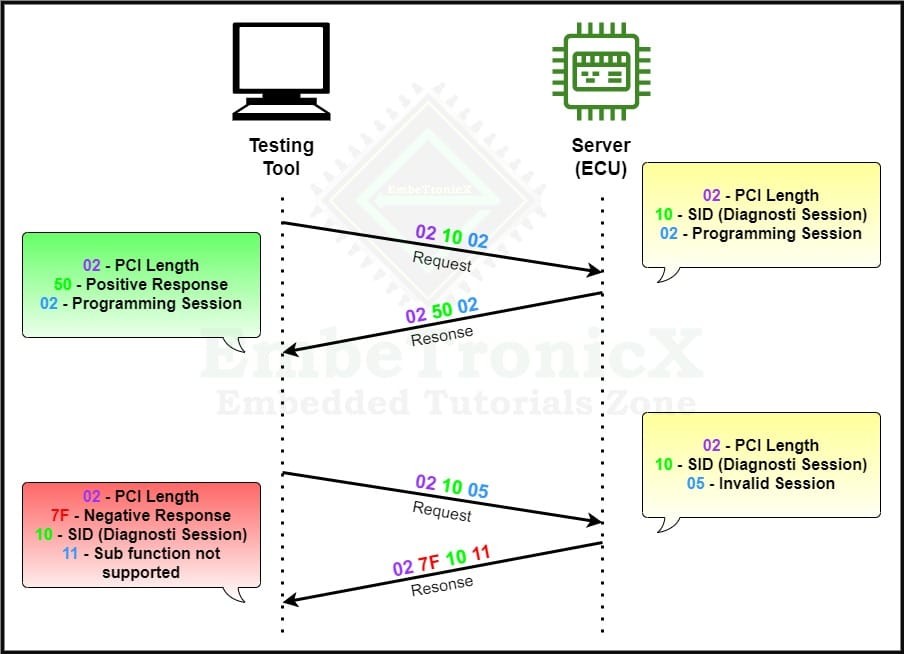 Mercedes-Benz ECU Diagnostics
Mercedes-Benz ECU Diagnostics
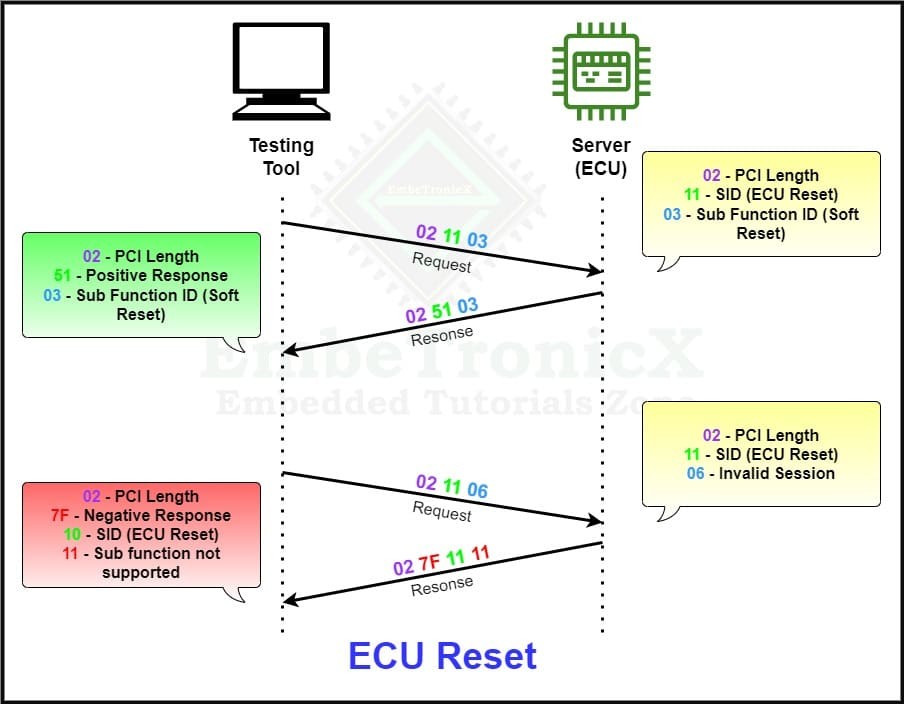 Mercedes-Benz ECU Reset Process
Mercedes-Benz ECU Reset Process
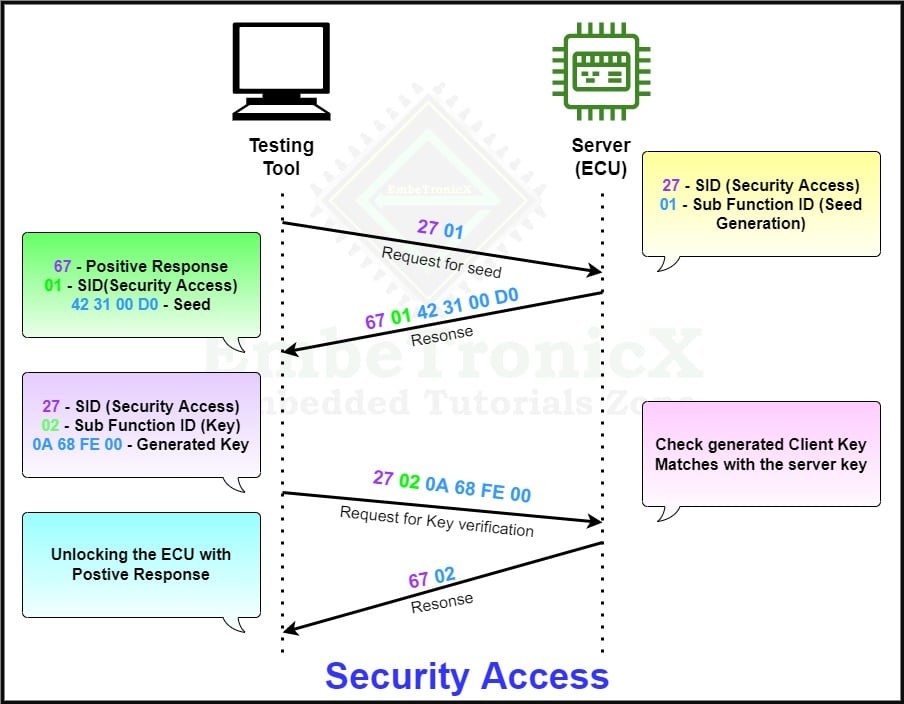 Mercedes-Benz Diagnostics Security Access
Mercedes-Benz Diagnostics Security Access
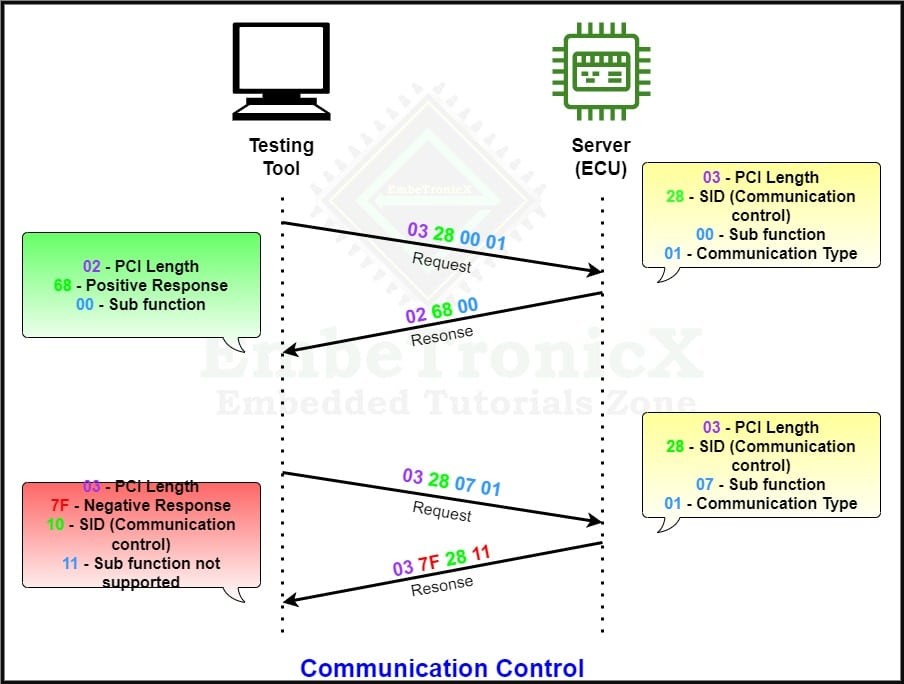 Mercedes-Benz Diagnostics Communication Control
Mercedes-Benz Diagnostics Communication Control
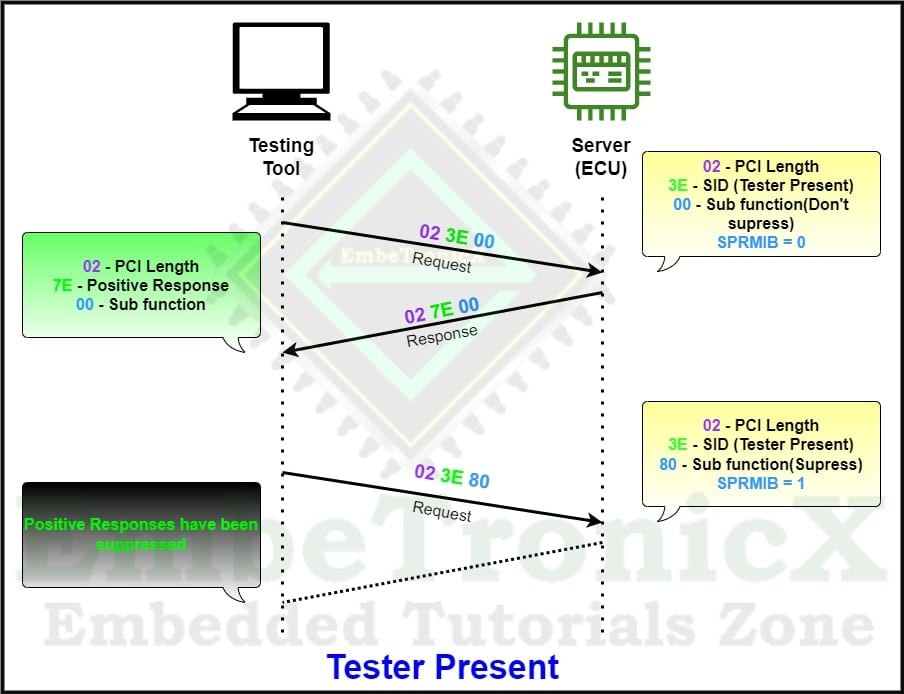 Mercedes-Benz Diagnostics Tester Present Positive Response
Mercedes-Benz Diagnostics Tester Present Positive Response
 Mercedes-Benz Diagnostics Tester Present Negative Response
Mercedes-Benz Diagnostics Tester Present Negative Response